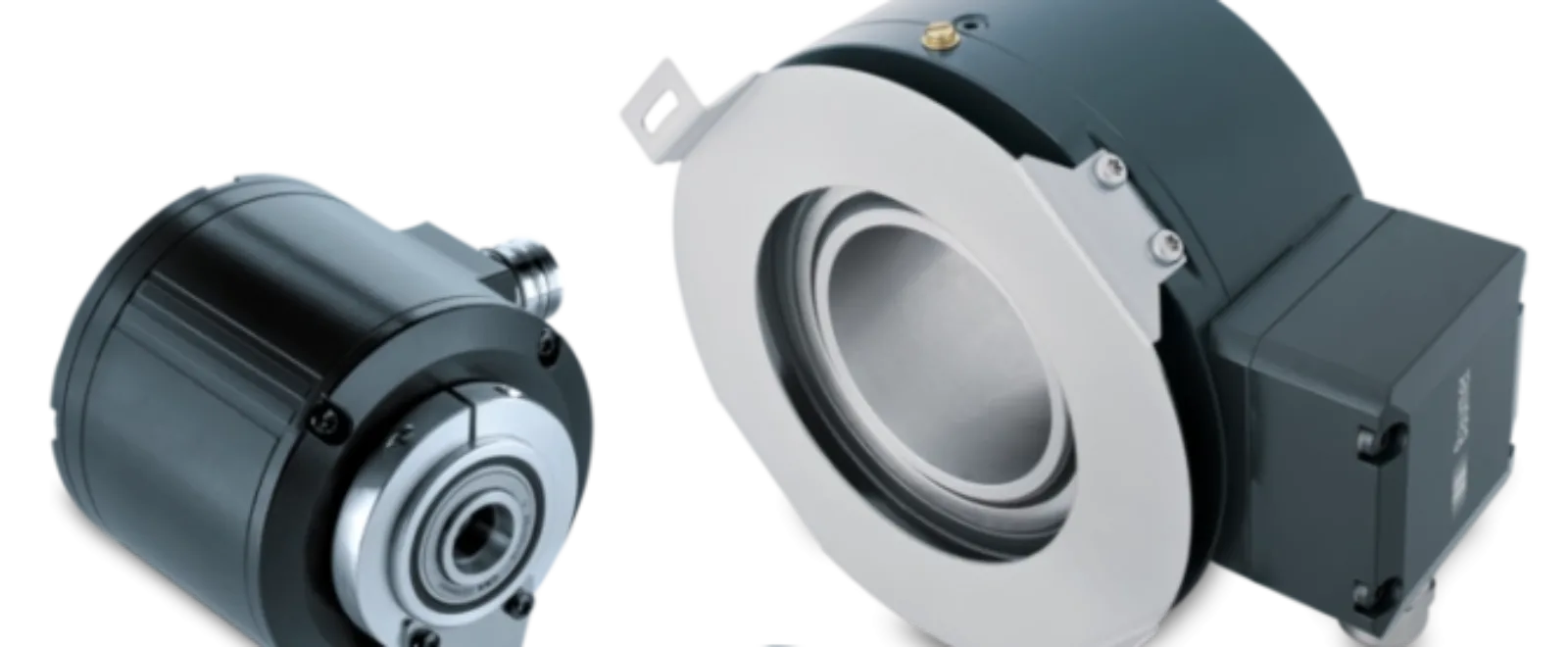In today’s fast-paced world of industrial automation, precision and reliability are non-negotiable. From controlling robotic arms in manufacturing plants to ensuring accurate positioning in offshore operations, encoders are the unsung heroes making it all happen. But what are encoders, exactly? Why are they indispensable across so many industries?
In this blog, we’ll explore what encoders are, how they work, where they are applied, and how to choose the most suitable model for your operation.
What are encoders, and how do they work?
When people search “what are encoders,” they’re often trying to grasp how machines detect position, movement, and speed. Encoders are electromechanical devices that convert mechanical motion, either rotary or linear, into electrical signals. Controllers or computers interpret these signals to determine essential motion parameters, such as position, direction, and velocity.
In automation systems, encoders function as precision feedback devices. They continuously send real-time data, enabling accurate adjustments and synchronisation of machine components. Without them, modern automation would lack the responsiveness and accuracy it demands.
Integrating encoders into a system
Consider a robotic assembly line: an encoder mounted to a motor tracks shaft rotation with high accuracy. By calculating the number of rotations and direction, the system determines the robot arm’s exact location. This information helps fine-tune movement and prevents errors in alignment, speed, or position.
Encoders act as a vital interface between mechanical operations and digital control, ensuring that systems move as programmed with minimal deviation.
Encoder sensing technologies
Encoders use different sensing principles depending on the application and environment:
- Optical: Light-based systems that detect motion through patterns on a rotating disc. Known for their precision.
- Magnetic: Employ magnetic fields to determine shaft movement. Ideal for use in dusty, oily, or harsh environments.
- Capacitive: Detect changes in capacitance between plates during motion. Resistant to contaminants and electrical noise.
Each sensing method offers distinct advantages and is selected based on factors such as resolution, robustness, and environmental compatibility.
Applications across industries
To truly understand what encoders are, it is helpful to see their impact across various sectors. At Euro HÜBNER Benelux B.V., we support industries where motion accuracy is not optional but essential, like:
- Heavy-duty industry: Encoders support real-time diagnostics and positioning in rugged machinery such as conveyors and crushers. They reduce downtime by enabling predictive maintenance.
- Port and crane industry: Used in hoists and trolleys for positioning and load tracking, encoders improve safety and maximise equipment throughput.
- Steel and metal industry: From rolling mills to high-speed cutters, precise feedback ensures consistency and material quality in harsh, high-temperature environments.
- Paper industry: In continuous production lines, encoders help control paper tension, cutting sequences, and alignment to minimise waste.
- Wire and cable industry: They regulate coil tension and length during spooling, avoiding overrun or slack.
Incremental and absolute encoders explained
The most well-known encoders are incremental and absolute encoders. When evaluating what encoders are best for a specific application, it’s crucial to distinguish between the two types.
Incremental encoders
Incremental encoders are commonly used for applications where speed and relative movement are the focus. They emit pulses as the shaft turns, and the controller counts these pulses to measure displacement and velocity. Since they do not retain position data during power interruptions, they require a reference point to reset on startup.
They are valued for their responsiveness and simplicity. Use cases include conveyor systems, rotating tools, and entry-level robotics. Despite lacking built-in memory of position, they provide highly accurate motion tracking in systems that don’t require persistent position data.
Examples from our product line include:
- POG10: Known for its durability and precision in harsh environments.
- HOG71: Ideal for heavy-duty applications, delivering high performance and reliability.
- POG83: Compact and versatile, suitable for various industrial installations.
- OG71: Provides accurate and dependable speed and positioning data.
Absolute encoders
Absolute encoders go a step further. Each shaft position corresponds to a unique binary code, so the system always knows the exact location, even after shutdown or power failure. This makes them indispensable in critical automation environments.
They excel in systems requiring precise positioning, continuity, and safety. They’re commonly found in robotic arms, CNC machinery, and lift systems where loss of positional awareness is not acceptable.
Options available at Euro HÜBNER Benelux B.V. include:
- HMG10-B SSI: Delivers reliable position feedback critical for precise control applications, particularly suited to automated industrial machinery.
- HMG10 T – PROFIBUS: Combines high-precision absolute encoding with PROFIBUS communication, suitable for complex industrial networks.
- PMG10 – PROFINET: Offers seamless integration with PROFINET systems, delivering fast and accurate position feedback ideal for modern automation environments.
Selecting the optimal encoder
Choosing an encoder is more than just picking a model—it involves aligning technical requirements with your operating environment.
- Accuracy: Determine the level of precision your system needs.
- Environmental Exposure: Determine whether the encoder must withstand vibration, chemicals, or extreme temperatures.
- Interface Compatibility: Ensure the encoder is compatible with your control system (e.g., PROFIBUS, PROFINET).
- Installation Constraints: Consider space, shaft type, and mounting orientation.
By understanding what encoders are and how they function in context, you can select a solution that ensures both efficiency and longevity.
Conclusion: The value of encoders in automation
So, what are encoders in the grand scheme of industrial automation? They are not merely components—they’re enablers of control, efficiency, and safety. These feedback systems power the intelligence behind motion control, keeping processes accurate and synchronised.
At Euro HÜBNER Benelux B.V., we specialise in tailored encoder solutions designed for demanding applications. Whether you’re navigating harsh offshore conditions or fine-tuning a high-speed assembly line, we’re here to help.
